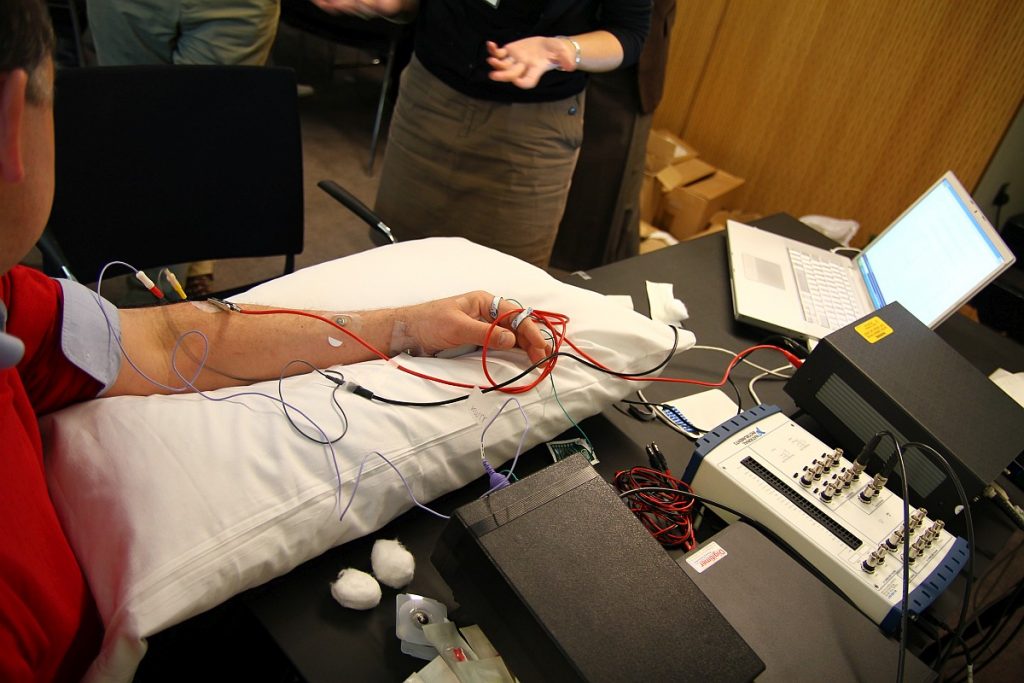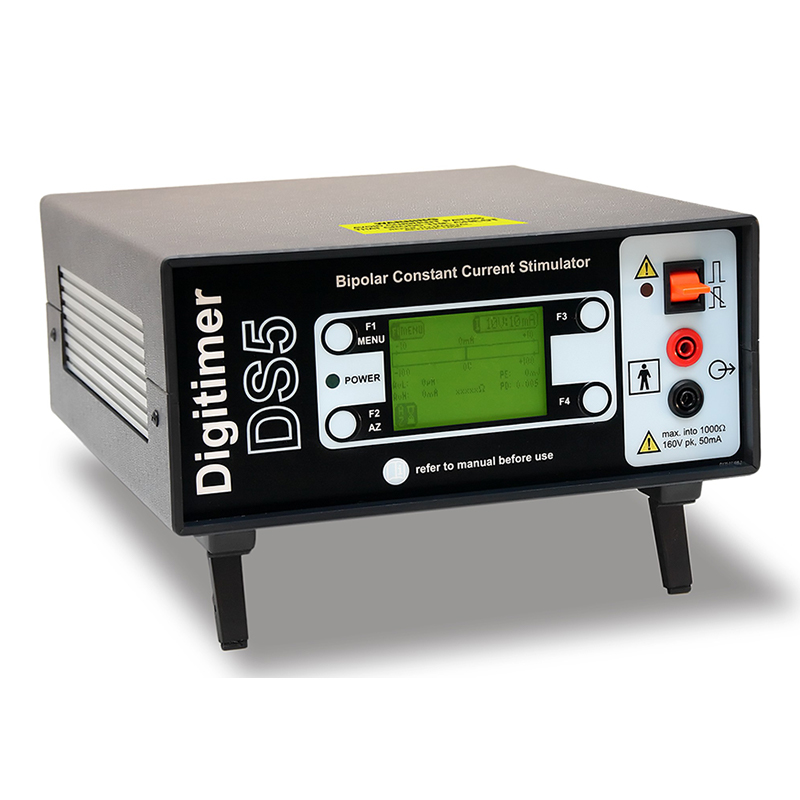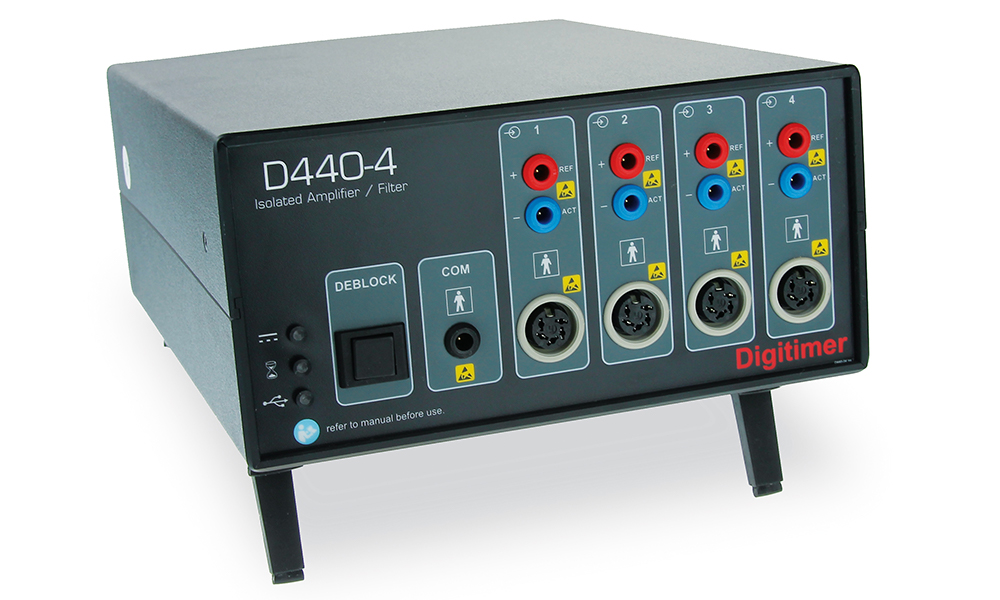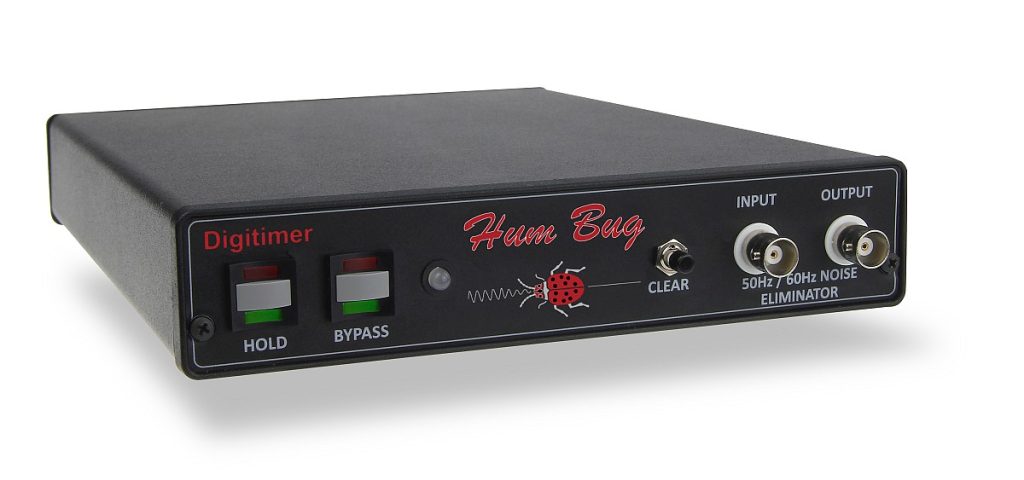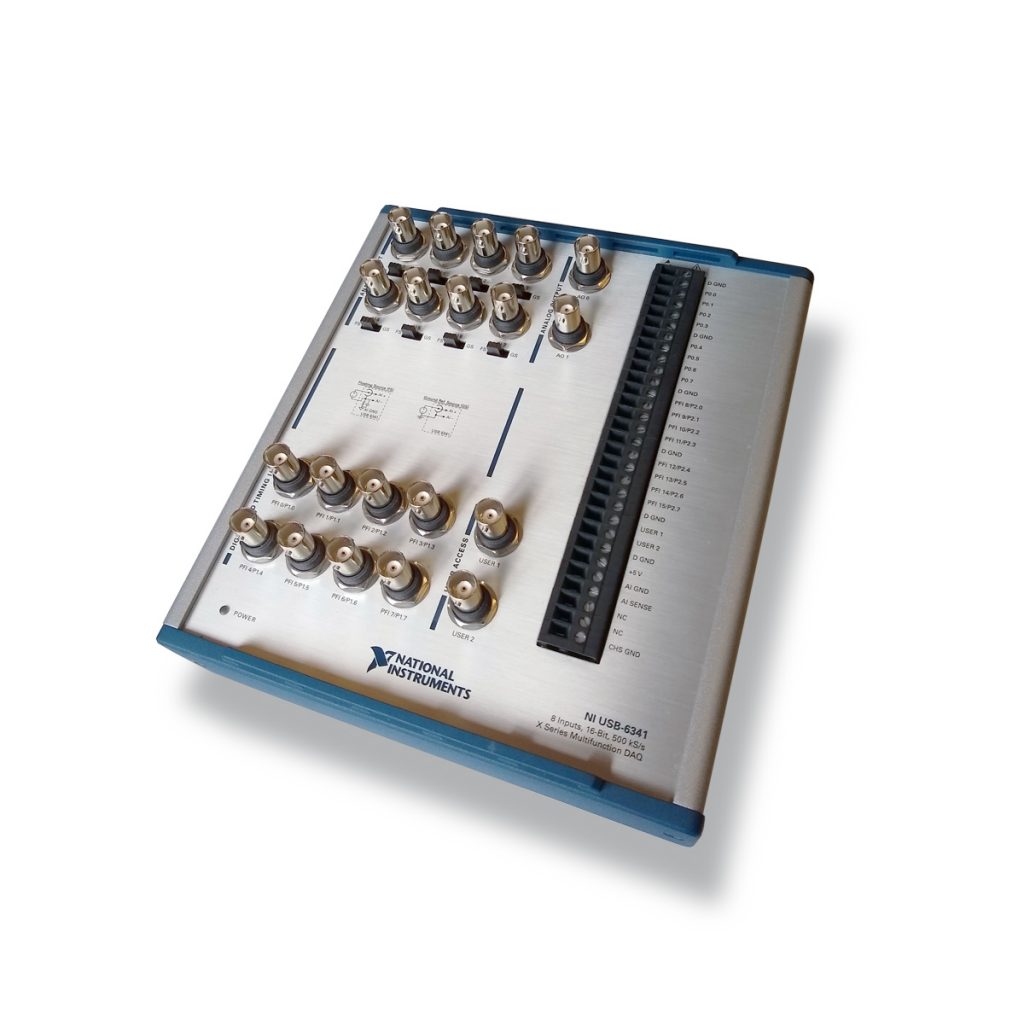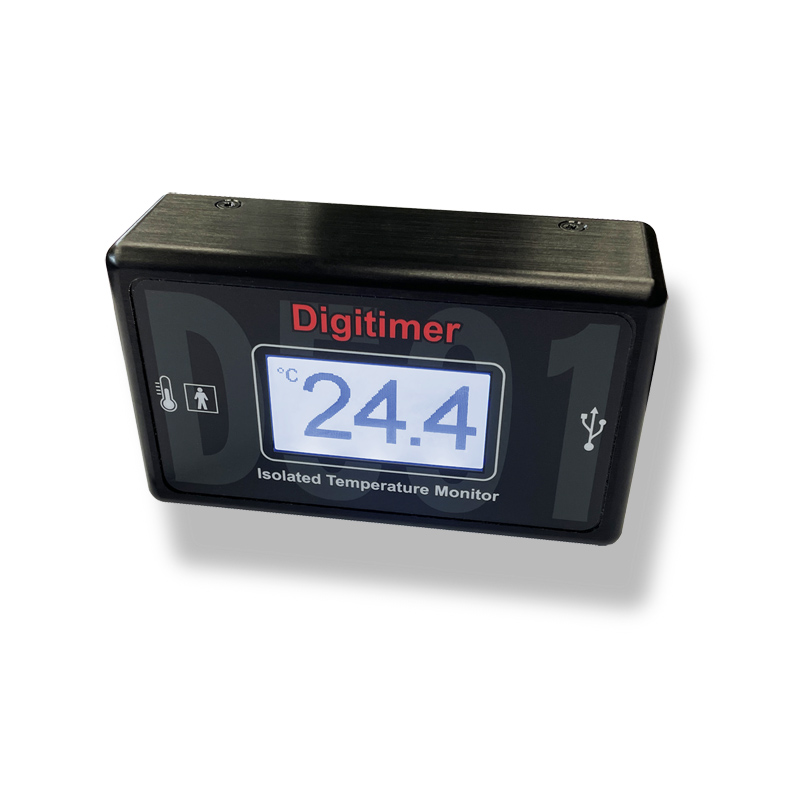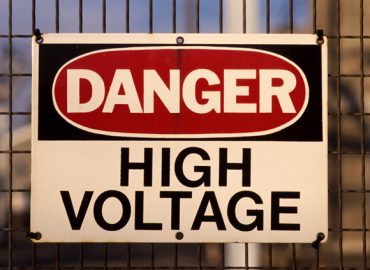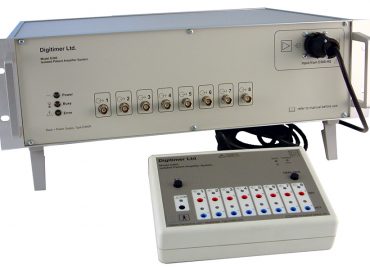Application Note
Examining Nerve Excitability using QtracW Threshold Tracking Software
Updated 13th June 2024
Introduction
In 2020, Prof Matthew Kiernan (University of Sydney) and colleagues published a paper in the journal Clinical Neurophysiology which set out consensus guidelines for anyone interested in making human in vivo measurements of axonal excitability (Kiernan et al. 2020). Axonal excitability studies allow researchers and clinicians to make deductions about membrane and ion channel properties in a range of diseases. The published guidelines summarise the physiological basis, methodology and interpretation of excitability studies, promoting their use to the wider clinical neurophysiology community. The guidelines are derived from previous axonal excitability studies and are based on a consensus of international experts. They also serve to highlight the potential difficulties when interpreting abnormalities in diseased axons. We recommend this publication as the starting point for anyone wanting to learn more about the implementation of nerve excitability testing in a clinical research environment.
In this brief blog article, we introduce you to the major hardware and software components needed in an experimental setup intended for human axonal excitability measurements. This includes specialist software, hardware for electrical stimulation and EMG recording, as well as data acquisition equipment, that provides the “control hub” for communication between the various components of the system.
Computer-controlled Electrical Stimulator – Digitimer DS5
Over the last 20 years, Digitimer has closely collaborated with researchers investigating axonal excitability. Stimulation and recording protocols originally developed by Prof. Hugh Bostock and colleagues in the late 1990’s evolved into a Microsoft DOS version of the QTRAC threshold tracking software (Kiernan et al. 2000). QTRAC software allowed compound muscle action potential (CMAP) amplitudes to be “tracked” following the delivery of a series of electrical stimulation test pulses, enabling multiple measurements of axonal excitability over a short period of time. In these early days, stimulus waveforms generated by the computer were converted into an isolated current output using a prototype Digitimer stimulator, but in 2007 the medically CE certified Digitimer DS5 became commercially available. Driven by a biphasic analogue voltage signal, the DS5 converts this into an isolated current stimulus which is proportional to and follows the shape of the voltage waveform.
Isolated EMG Amplifier with Analogue Signal Output – Digitimer D440
Another critical component of a nerve excitability setup is a single channel EMG amplifier. Because QtracW depends on a data acquisition interface to control the stimulation and record the responses, the amplifier needs to have an analogue signal output. Analogue outputs are absent from many clinical EMG systems designed for standard diagnostic testing, as they tend to internally digitize the signals and this means an alternative amplifier has to be used. Primarily developed for QtracW users, the Digitimer D440-2 and D440-4 isolated research amplifiers are designed for safe for human research use. The D440 amplifiers include a Windows PC Control Panel and can also be controlled by other third-party software.
Stimulus Control & Response Acquisition Software – QtracW
Today, Digitimer not only manufactures the DS5 Isolated Bipolar Stimulator required for threshold tracking of nerve excitability using QTRAC, but we are also the global source for the QTRAC software. QtracW is the current Windows version and is available for purchase as a time-limited licence (usually 3 years). Registered users of QtracW receive USB security keys or “dongles” that permit the acquisition (QtracS) or analysis (QtracP) programs to operate. Dongle lifetimes may be extended or additional dongles purchased upon payment of an additional fee. The software is freely downloadable and may be installed for a trial period of up to 50 days.
50/60Hz Noise Elimination – Humbug or Digitimer D400
While not an absolute requirement, many scientists and clinicians who carry out nerve excitability testing, opt to use active noise elimination technology to remove 50Hz or 60Hz interference from their recordings. With a good quality amplifier and in perfect laboratory conditions, it may be possible to record interference-free responses, but many setups are mobile or used in electrically noisy environments, such as hospital clinics, where interference can be significant and unpredictable.
The single-channel Humbug is ideally suited to situations where only one channel is ever being recorded from. However, if future requirements may involve recording from two, four or even eight EMG channels, we recommend our multi-channel Digitimer D400’s, which allow 50/60Hz interference to be removed from all signals.
National Instruments Data Acquisition Interface
Other than a Windows PC and a selection of cables and electrodes, one of the most important parts of a QtracW setup is a data acquisition interface that controls the flow of information from the amplifier to QtracW and from QtracW to the DS5 stimulator. Historically, QtracW has been used with a variety of commercially available DAQ interfaces, but in recent years development has shifted towards compatibility with products and drivers from National Instruments. These typically offer excellent specifications, in terms of data transfer capabilities and are readily available for purchase at reasonable prices. Digitimer currently recommends and supplies the National Instruments USB-6341-BNC, which is connected to the PC via a USB cable and has input/outputs terminated with standard BNC connectors. For more compact or portable setups, it is possible to use a screw-terminated equivalent.
D501 Isolated Temperature Monitor
Nerve excitability measurements, particularly components of the recovery cycle are highly temperature-dependent, and as it is not particularly easy to accurately control nerve temperature, a reliable temperature monitoring method is advised. This allows users to compare recordings across experimental groups of subjects with a point of reference in respect of temperature. Temperature correction factors may also be employed to compensate for inter-operator variations. In combination with our new D501 Temperature Monitor, users of the QtracS program can now measure and display instantaneous temperature with each stimulus and record this temperature alongside other data.
With data transfer and power provided by a standard USB connection, the D501 includes a dedicated pre-wired disc thermistor probe which may be conveniently taped to the skin or placed under the end of a stimulation electrode. The D501 also features an LCD screen, allowing the operator to observe temperature instantly.
Bringing Everything Together
Now that we have described the various parts of a typical nerve excitability setup, it is time to consider how everything connects together. Once the required software packages are installed on the host PC, it is just a question of connecting the various hardware components to the PC and/or National Instruments interface. A modified version of the schematic shown opposite is included in the consensus guidelines and it serves to illustrate the connections and flow of signals/data between the various parts of the setup.
Upcoming Training Opportunities
For anyone interested in receiving some hands-on training in a range of excitability techniques, would like to draw your attention to regular workshops held in various locations around the world. These workshops introduce protocols and analysis methods used to examine axonal, muscle, and cortical excitability. Specifically, there is now an annual workshop held in Aarhus (Denmark), led by Prof. Hatice Tankisi and Dr James (Tim) Howells. This multi-day event includes lectures by workshop faculty members and eminent invited speakers. Importantly, each day includes practical sessions, allowing delegates to develop the skills required to make successful recordings.
References
Kiernan MC, Burke D, Andersen KV, Bostock H. Multiple measures of axonal excitability: a new approach in clinical testing. Muscle Nerve. 2000 Mar;23(3):399-409.
https://doi.org/10.1002/(SICI)1097-4598(200003)23:3<399::AID-MUS12>3.0.CO;2-G
Matthew C. Kiernan, Hugh Bostock, Susanna B. Park, Ryuji Kaji, Christian Krarup, Arun V. Krishnan, Satoshi Kuwabara, Cindy Shin-Yi Lin, Sonoko Misawa, Mihai Moldovan, Jiaying Sung, Steve Vucic, Brian J. Wainger, Stephen Waxman, David Burke. Measurement of axonal excitability: Consensus guidelines,
Clinical Neurophysiology, Volume 131, Issue 1, 2020, Pages 308-323, ISSN 1388-2457,
https://doi.org/10.1016/j.clinph.2019.07.023
Find Out More
If you would like to find out more about nerve excitability measurements, the equipment required or future training opportunities, then please do not hesitate to contact us or any of our local representatives.

